13 Awesome Examples of Using Sustainable Construction

Sustainable construction is essential to building a greener and more environmentally-friendly future.
There are many incredible examples of sustainable architecture worldwide, and each one is pushing the boundaries of what’s possible.
Awesome examples of sustainable construction include the Shanghai Tower in China, Bullit Center in Seattle, The Crystal in London, and the Vertical Forest in Milan. These buildings have all been designed with sustainable materials and construction techniques to reduce their environmental impacts.
The rest of this article will explore some of the most impressive sustainable construction projects from around the globe, including their sustainability features and what makes them stand out.
If you’d like to find out more about sustainable construction, why not read our article “23 Sustainable Building Materials You Can Use Today?”
1. Shanghai Tower in China
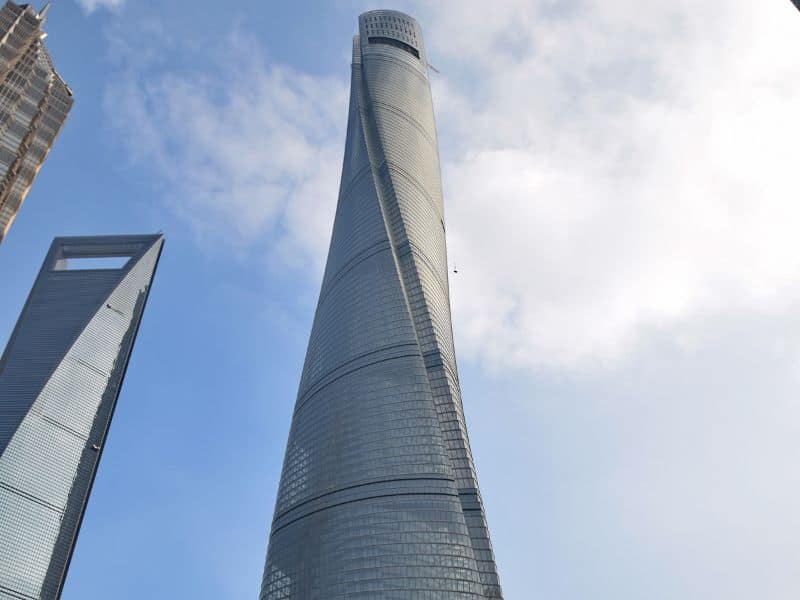
The Shanghai Tower, standing 632 meters (2,073 feet) tall, is a prime example of sustainable construction. This green building is the second tallest skyscraper in the world and is designed to be highly energy efficient.
One of the most notable sustainable features of the Shanghai Tower is its spiral design which creates an aerodynamic surface that reduces wind loads and improves its energy efficiency.
The design incorporates a double-skin façade made of glass, which provides natural ventilation and brings in daylight to reduce the need for electric lighting.
It also helps to keep the building cool in the summer and warm in the winter, reducing the need for air conditioning and heating. This improves energy efficiency and the comfort of the building’s occupants.
The tower also boasts other amazing features:
- Over 2,000 solar panels form a curtain wall on the building’s exterior, providing solar power and reducing its reliance on fossil fuels.
- A smart control system that optimizes the building’s energy use by monitoring and adjusting lighting, heating, and cooling systems in real time.
- 270 wind turbines that generate electricity that is used to power the building’s exterior lighting.
- 21 gardens that provide green space for the building’s occupants, improve air quality, and reduce the urban heat island effect.
2. Bullit Center in Seattle, Washington, USA
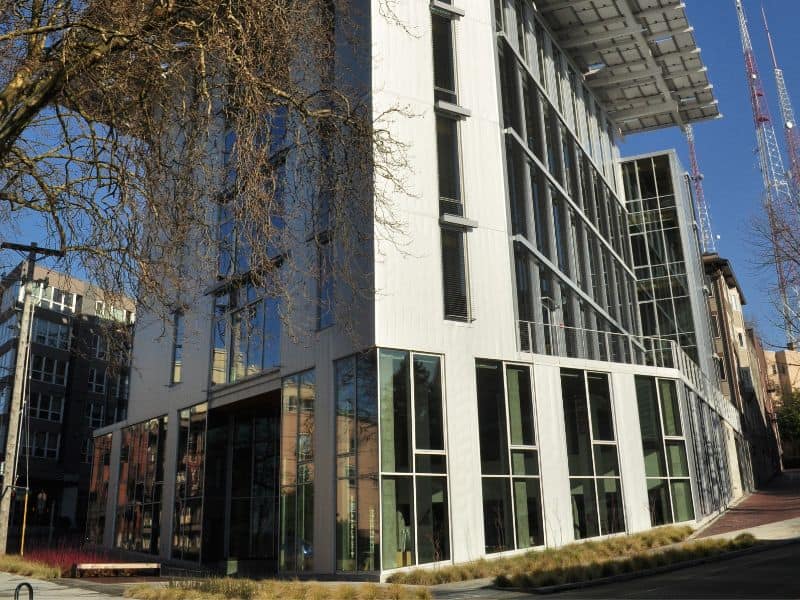
The Bullit Center is a six-story office building in Seattle, Washington, and it is the greenest commercial building in the world.
The Bullit Center was designed to be as resource-efficient as possible. The building’s net-zero energy, water, and carbon design incorporate various sustainable features, making it a model for green buildings.
The Bullit Center features an array of energy-efficiency components, such as high-performance windows to maximize natural daylight, a sophisticated control system that optimizes energy use, and rooftop solar panels to produce all or most of the building’s own energy needs.
The building design also features composting toilets, waterless urinals, low-flow fixtures to improve water conservation, and toxic-free materials that reduce the building’s environmental impact.
3. ACROS Fukuoka Prefectural International Hall in Fukuoka, Japan
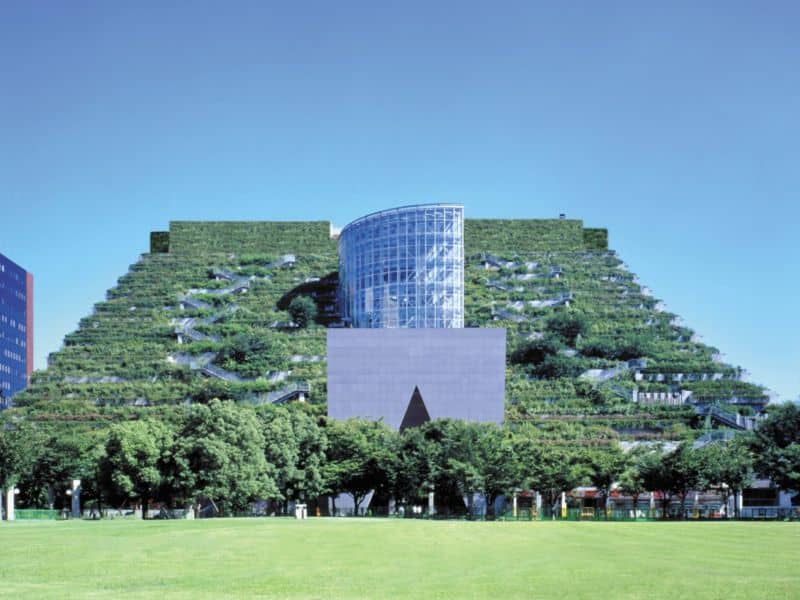
The ACROS Fukuoka Prefectural International Hall is a multi-purpose building in Fukuoka, Japan. This stunning building was designed to demonstrate the potential of sustainable construction.
The building was built using recycled materials, and its unique design features tiers of terraced gardens that act as a natural cooling system, avoiding the need for air conditioning.
The building has 15 gardens irrigated with recycled rainwater, and native plants create a natural environment for the building’s occupants.
4. Vertical Forest, Milan, Italy
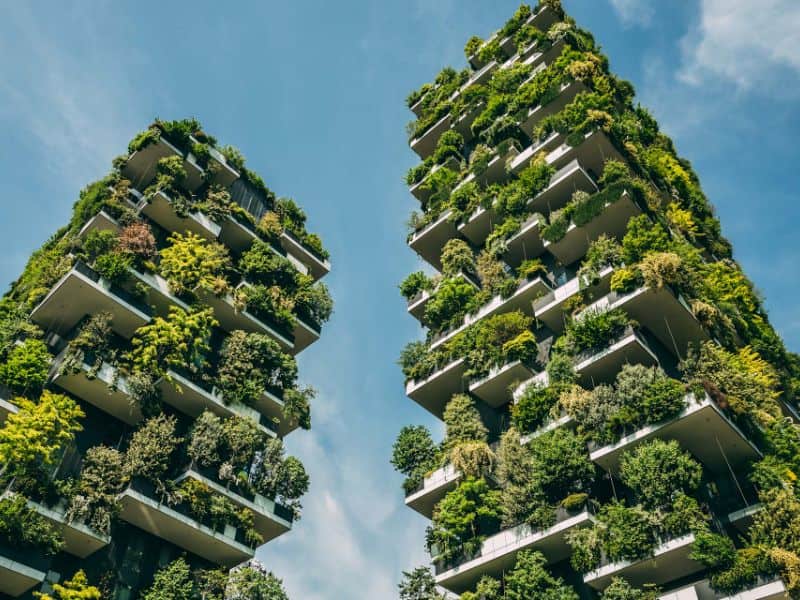
The Vertical Forest is a unique residential complex in Milan, Italy. This sustainable building was designed to help combat air pollution and improve the city’s green spaces.
It features two tower blocks with plant-based facade designs that absorb carbon dioxide and generates oxygen, helping enhance the air quality in the area.
Over 900 trees, shrubs, and other plants are used to create the Vertical Forest’s unique facade.
This lush green space provides insulation to keep the building cool in summer and warm in winter and attracts birds, bees, and other beneficial insects, improving the building’s biodiversity.
In addition, the terraces help to reduce noise pollution and reduce the urban heat island effect.
5. One Angel Square, Manchester, UK
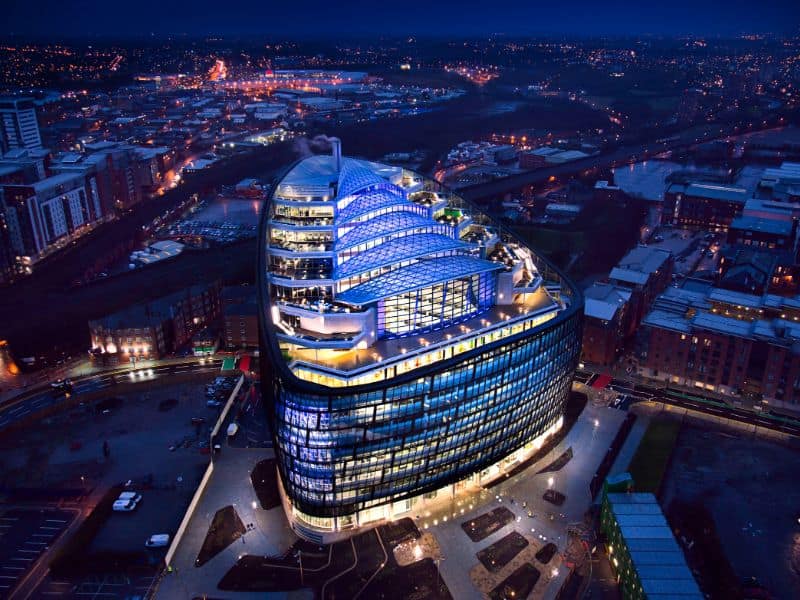
One Angel Square is a striking office building with an outstanding green building design that has earned it the title of one of Europe’s most sustainable buildings. The building was designed to use renewable energy sources and reduce its reliance on fossil fuels.
This 15-story building has an impressive array of sustainable features, such as a double-skinned facade that helps minimize heating and cooling loads and an open atrium that provides natural lighting and ventilation.
The combination of these features helps the building to use less energy. Additionally, the building features greywater and rainwater harvesting systems, LED lighting, and other impressive features.
6. The Edge, Amsterdam, Netherlands

The Edge in Amsterdam is one of the most energy efficient office buildings in the world. Housing the headquarters of the world’s largest professional services firm, Deloitte, this building was designed to be self-sustainable and use less energy than traditional buildings.
This building has several innovative and sustainable features that minimize its environmental impact.
These features include an outer facade that contains integrated solar cells and an innovative ventilation system that uses natural air currents to regulate the interior climate.
In addition, the building is equipped with LED lighting and light sensors that optimize energy consumption.
7. The Crystal, London, UK
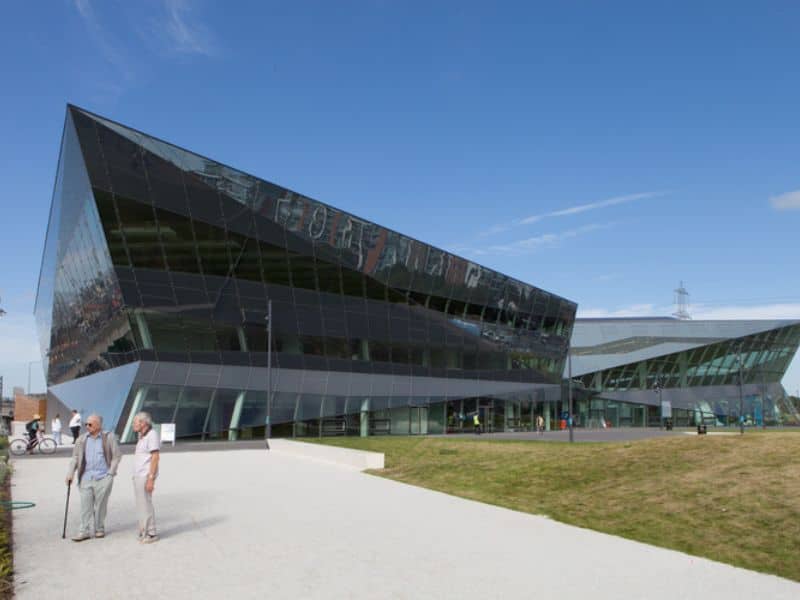
Located in the heart of London’s Royal Victoria Docks, The Crystal is a state-of-the-art building designed to demonstrate the potential of sustainable construction.
It houses the world’s largest exhibition on urban sustainability and a plethora of green technology, such as rainwater harvesting, renewable energy in the form of solar panels, and energy efficient lighting.
The structure of the Crystal has been designed with sustainability in mind. It is built from renewable and recyclable materials, and its walls are made from recycled glass.
The building also has a unique, terraced design which helps maximize natural light and ventilation, while its air-tight construction minimizes energy bills.
8. One Central Park in Sydney, Australia
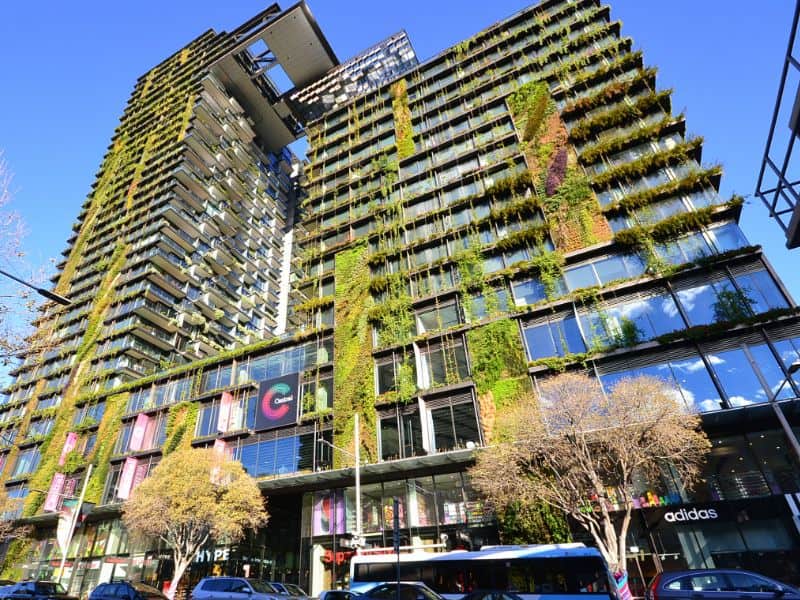
One Central Park is a mixed-use development in Sydney, Australia. It features two towers connected by an elevated park with over 250 species of plants. This park also serves as an efficient energy source for development.
In addition to its impressive sustainable features, One Central Park has an eye-catching design.
Its double-glazed facade is designed to reflect the sun’s rays, while its curved terraces help to reduce the energy it uses.
The building also features an impressive vertical garden and water harvesting system, making it one of the most sustainable buildings in Australia.
9. PARKROYAL Collection Pickering in Singapore
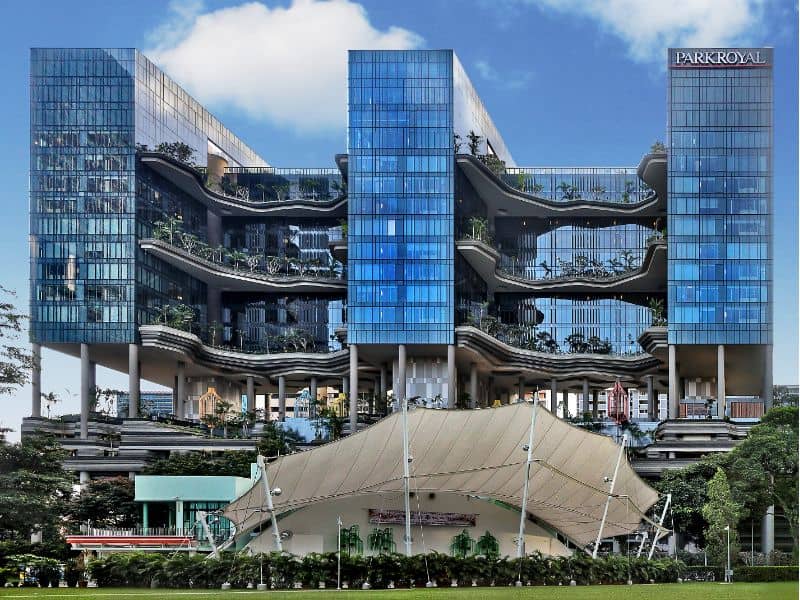
PARKROYAL Collection Pickering is an award-winning landmark building located in Singapore. It has won several prestigious awards for its commitment to sustainable construction, including the 2019 BCA Sustainability Leadership Awards for its building design.
This building has been designed with sustainability in mind. Its facade comprises numerous sky gardens that reduce the effects of the urban heat island effect.
A rainwater harvesting system collects and reuses rainwater to irrigate these gardens. The gardens are made up of plants and shrubs native to Singapore, which helps the building blend into its surroundings.
10. One Bryant Park Bank of America Tower in NYC, USA
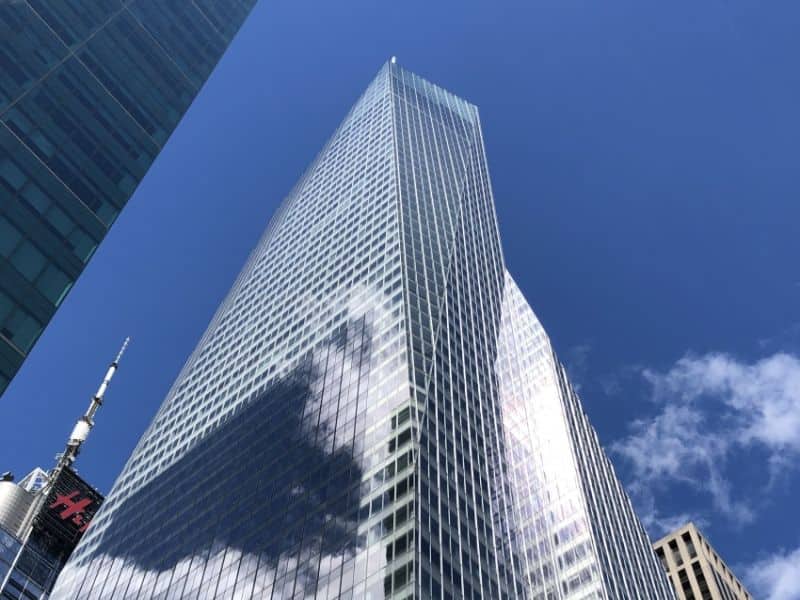
The Bank of America building in New York City is an iconic example of sustainable design. This building was designed to be energy efficient and eco-friendly, making it the first LEED Platinum-certified skyscraper in New York City.
The 55-story building was built using green construction materials, such as heat-reflecting glass, and has several impressive green features.
The most remarkable feature of this building is its on-site power plant, which generates 4.6 megawatts of energy and can power more than a third of the building’s electricity load.
The green rooftops of this building are one of the most impressive aspects of its design, as they can compost refuse from on-site restaurants.
11. Shanghai Natural History Museum in Shanghai, China
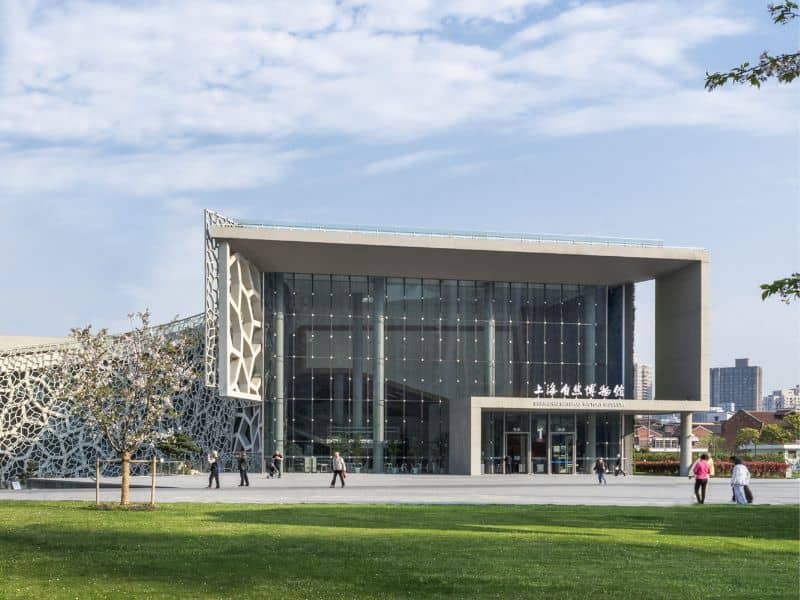
The Shanghai Natural History Museum is a shining example of sustainable construction.
The design of the building was inspired by nature, with its curved roof resembling a dragonfly’s wings. This icon of sustainability was designed to reduce carbon emissions and be eco-friendly, incorporating a spiral-shaped design that encourages natural light and ventilation.
Using bioclimatic principles and geothermal energy reduces the building’s energy consumption, making it one of the greenest buildings in Shanghai.
A green coating is also applied to the structure to reduce heat absorption and improve insulation.
12. 18 Robinson Tower in Singapore
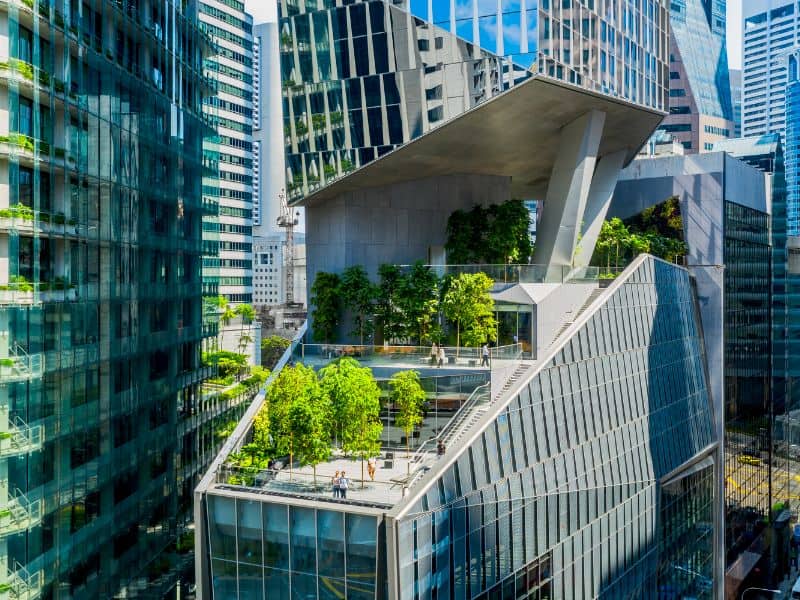
A stunning example of sustainable construction, the 18 Robinson Tower has won several awards for its commitment to sustainable construction processes.
Located in Singapore’s Central Business District, the building was designed using the latest sustainable construction technologies.
The tower’s design features extensive green areas and terraces that are used to improve insulation and shading.
The tower’s facade is designed to maximize natural light, while its green roof absorbs heat energy and helps to reduce carbon emissions from the building.
13. Manitoba Hydro Place in Winnipeg, Canada
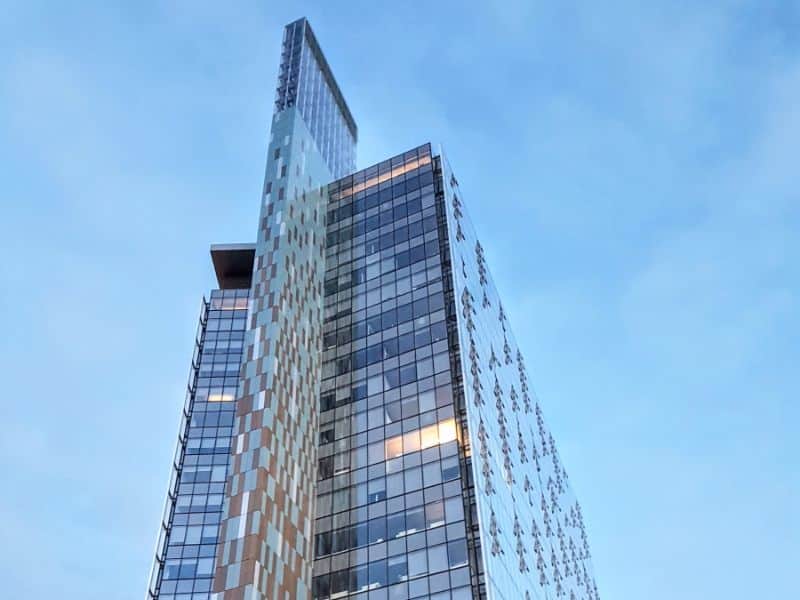
The Manitoba Hydro Place received an impressive LEED Platinum rating, making it one of the most sustainable buildings in Canada.
This impressive building was designed to reduce greenhouse gas emissions and conserve resources using natural light, geothermal energy, and recycled materials.
The building’s impressive sustainable design uses natural resources and energy-saving technologies. The building’s double glazing helps to reduce energy use, while its south-facing winter gardens minimize heating costs by trapping warm air during colder weather.
An underground aquifer provides the building with geothermal energy that helps to cool the building in the summer and heat it in the winter.
The structure’s exterior skin is also computer-controlled, with motorized vents that adjust throughout the day to optimize natural air circulation.
These features combine to create an impressive and sustainable building that sets the standard for green construction.
If you’re curious about sustainable construction, read our article “What Does Sustainable Construction Mean? (What To Know)” to find out more.







